Racism turned their neighborhood into 'Cancer Alley.’ Now they’re dying from COVID-19.
RESERVE, La. – The doctor called on Mother’s Day with the news Karen Wilson had dreaded for weeks.
Your brother won’t survive the night, he told her. Expect another call soon. Don’t be alone.
Wilson’s younger brother, Jules Duhe, had been on a ventilator fighting COVID-19 since April. She hung up the phone and called her other brother, cried, showered and cried some more before finally falling asleep.
At 2:30 a.m., the phone call came, springing her awake. Duhe, 53, was dead. His magnetic smile, his love of food and travel, his spontaneous visits – all gone. Wilson sat up in bed, cold shivers running through her.
Just four years earlier, Wilson had buried her older brother, James Duhe, who died of liver cancer at age 61. The cancer had consumed his body in two months, stunning the family. In August, Wilson’s sister, Shirley Jacob, already suffering congestive heart failure and other ailments, also contracted COVID-19. She died within a week.

Three funerals in four years. It was nearly more than the family could handle, even in a place like Reserve, where the risk of cancer is the highest in the nation, according to the Environmental Protection Agency.
“A lot of people around here were dying of cancer,” Wilson said. “Now, they’re dying of COVID.”
In the first half of the 20th century, Reserve was a mostly white small town on the east bank of the Mississippi River adjusting to life in post-slavery Louisiana. But in the 1960s, chemical plants arrived in force, drastically reshaping the region and transforming the racial makeup of the town.
White people moved out and African American families moved in at a time when Black Americans faced redlining and other discriminatory housing practices elsewhere but found easy access to home loans close to the plant.
Today, Reserve is majority Black, surrounded by a dozen petrochemical plants that provide some jobs while also releasing potentially harmful toxins into the air: ammonia, chlorine, hydrogen cyanide, sulfuric acid, hydrochloric acid and a little-known chemical called chloroprene.
The transition of Reserve from slave plantation to toxin-choked community shows what systemic racism looks like. Its residents once worked the local sugar cane fields; now they pray for medical help as they endure high rates of cancer, respiratory illness, diabetes and kidney disease. All are preexisting conditions that render people more vulnerable to COVID-19, according to the Centers for Disease Control and Prevention.
As the U.S. continues to grapple with a virus that disproportionately attacks people of color, residents and activists in Reserve ask why Black Americans have been left in such close proximity to environmental hazards, making them vulnerable in the path of the virus.
Since the coronavirus emerged here in March, St. John the Baptist Parish, which includes Reserve, has consistently ranked among the top 30 U.S. counties with the highest COVID-19 death rates, according to data compiled by USA TODAY. Seven of the top 10 have populations where people of color make up the majority, the analysis found. More than 11% of residents in the top 20 counties – 4,883 people – don’t have health insurance, the data shows.
St. John the Baptist Parish, with a population of 43,446, had recorded 105 deaths as of Oct. 12. That’s nearly double the state death rate. Nearly 60% of the parish’s COVID-19 victims were Black and many came from Reserve.
“This is a result of historical racism,” longtime Reserve resident and activist Robert Taylor said. “We’ve gotten the worst of everything, and we’re getting the worst of this.”
Plants in the parish emit chemicals deemed likely carcinogens by the EPA. The largest of those, Denka Performance Elastomer, releases the highest amount – more than 75,000 pounds of chloroprene in 2018, or 42 times the amount of the next-highest emitter, EPA records show.
The 100-mile stretch between New Orleans and Baton Rouge is known as “Cancer Alley” because of its high number of petrochemical plants. The long line of racism – from slavery to decades of discrimination – entrenched along that riverfront territory is a key reason COVID-19 is spreading there so quickly, said Robert Bullard, a distinguished professor of Urban Planning and Environmental Policy at Texas Southern University who is considered the father of the modern environmental justice movement.
“It was like a heat-seeking missile that zeroed in on the most vulnerable populations,” Bullard said, “and the result was this death bomb.”
The only neoprene plant in the US
Highway 44 in St. John the Baptist Parish runs parallel with the Mississippi River and winds alongside squat, red-bricked homes, church chapels and roadside BBQ joints. As the road approaches Reserve, the sprawling tangle of tubes, steel pipes and smokestacks of the Denka plant emerges to the north. Exhaust pipes steadily belch plumes of white smoke from several locations around the plant.
The facility was expanded in 1968 by DuPont to produce neoprene, a synthetic rubber used to make tires during World War II and now used for wetsuits, laptop sleeves and other products. In 2015, DuPont sold the neoprene production part of the facility to Japanese firm Denka. Today, the entrance to the plant reads: “DUPONT/DENKA.”
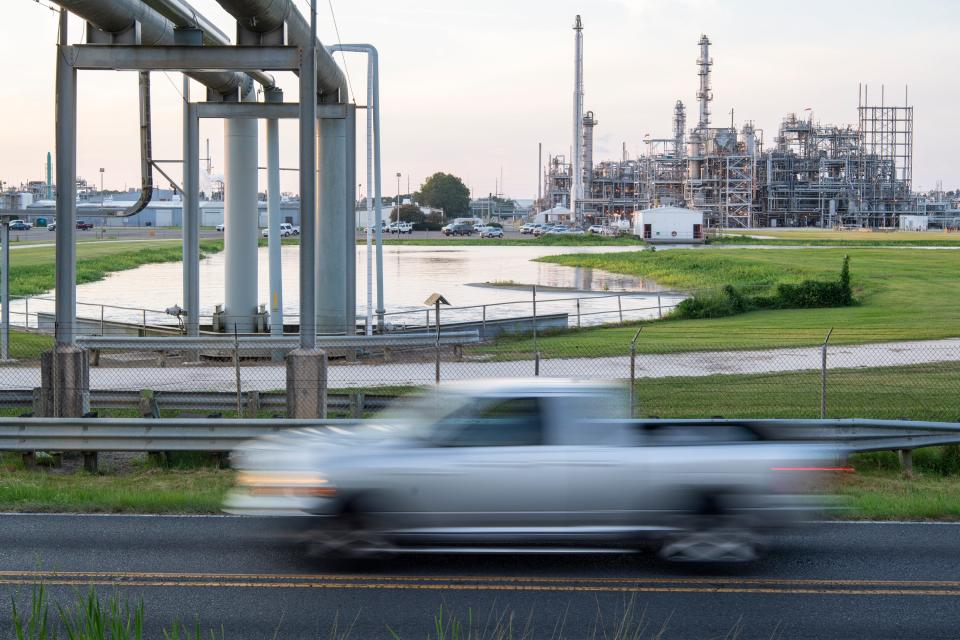
To make neoprene, the plant emits chloroprene, classified by the federal government as a "likely" carcinogen. It’s the only site in the U.S. that still produces neoprene.
Over the years, residents in Reserve dismissed the constant headaches, shortness of breath and widespread cancers as a part of life in the riverside township. But recent studies are starting to reveal what’s happening, and many signs point to the Denka facility.
Data clearly show that Black Americans in Louisiana, especially those living in St. John the Baptist Parish, suffer from higher rates of cancer when compared to state and national averages.
A report from the Louisiana Cancer Control Partnership, part of a national cancer prevention program created by the CDC, concluded that Black men and women in Louisiana "bear an unequal burden of cancer" compared to their white neighbors. A 2018 report from the Louisiana Department of Health zeroed in on St. John residents, finding that its residents got cancer at "significantly higher incidence rates" between 2006 and 2014.
Last year, the University Network for Human Rights went even deeper, surveying residents living within a mile of the Denka plant. It found that 40% of respondents regularly experienced chest pain, heart palpitations or both; one-third experienced wheezing or difficulty breathing; and more than half regularly reported headaches or dizziness.
And now, studies are finding those sickened St. John residents bearing the brunt of COVID-19’s wrath. Researchers at the Tulane Environmental Law Clinic reviewed nine parishes along the river and found that St. John ranked No. 1 in coronavirus deaths. Even factoring in the 28 deaths attributed to the Southeast Louisiana Veterans Home, a nursing home in Reserve ravaged by the virus, the parish’s COVID-19 death rate remained alarmingly high, said Kimberly Terrell, the study’s main author.
"These are communities that for decades have been breathing air that harms their lungs," Terrell said. "And it's pretty clear that people who have damaged lungs are more susceptible to COVID-19."
Denka officials dispute any connection between the chemical plant and the high death rate from COVID-19 in the surrounding neighborhood. In a statement to USA TODAY, Denka spokesman Jim Harris said St. John the Baptist residents exhibit "country-leading rates" of preexisting conditions and were likely spreading the virus before testing was widely available.
"We are unaware of a study suggesting chloroprene exposure could cause COVID-19, but there is absolutely no basis for that link," Harris said.
DuPont and Denka have challenged the government's classification of chloroprene as a likely carcinogen, arguing that there's no proven link between chloroprene and high levels of cancer in St. John. But internal company documents show that its scientists knew for decades about the dangers posed by the toxin. In a technical manual prepared in 1956 by DuPont, the company warned that chloroprene could enter the body through inhalation, causing a weakening of the central nervous system and “damage to vital organs.”
“Exposure to only a small dose may be severe enough to cause death,” read the document, which is stored at the Hagley Museum and Library in Wilmington, Delaware, where DuPont is headquartered.
More recent studies of workers at neoprene plants in other countries have come to similar conclusions.
"In studies of occupational workers, there is evidence that chloroprene causes an increased risk of liver cancer, while other studies in humans show the possibility of an increased lung cancer risk," according to an internal 2016 EPA memo.
In its report this year, Terrell’s team at Tulane concluded that residents in several river parishes surrounded by chemical plants were seeing disproportionately higher cases of COVID-19. Particulate matter from the plants suppressed immune systems, particularly in Black Americans who live closer to the plants, according to the study, which was requested by activists in Reserve.
Researchers at the Harvard University T.H. Chan School of Public Health came to similar conclusions in a report this year that coronavirus patients in areas with high levels of air pollution were more likely to die from the virus than patients in places with less pollution. The study, which reviewed data from more than 3,000 U.S. counties, revealed that high levels of PM2.5, tiny toxic particles in the air, contributed to higher death rates.

Researchers concluded that "our results underscore the importance of continuing to enforce existing air pollution regulations to protect human health both during and after the COVID-19 crisis."
The neighborhood closest to the plant is more than 90% Black. That’s no accident, residents and activists said. After DuPont moved in, favorable zoning and buyouts of white families altered the racial makeup of the community and left mostly Black American families to live with the airborne toxins.
“There were no definitive zoning laws," said Marylee Orr, executive director of the Louisiana Environmental Action Network, or LEAN, which coordinates environmental and citizen groups across the state. "These giants started moving in and there was nothing in place to protect the communities.”
Residents fall sick from 'Smoke of Progress'
When Louisiana Gov. John McKeithen had to travel from the state capital of Baton Rouge to New Orleans, he often told his driver to skip the freeway and take the river road instead.
The car sped past rows of sugar cane fields, former slave plantations just a few generations earlier. By the 1960s, the river parishes were filled with descendants of slaves and other Black Americans moving in looking for higher ground and cheap land during the era of Jim Crow, said Ashley Rogers, executive director of the slave museum at the Whitney Plantation.
“You had huge communities of Black workers, then you had very large-scale white landowners,” she said. “That’s where the deals were made.”

Sitting in the backseat of his black Cadillac limousine, McKeithen, who held the post from 1964 to 1972, and his press secretary, Mary Brocato, would review speeches or the day’s agenda. The governor’s attention would inevitably wander out the window, and he’d be lost in thought as the car zoomed alongside the Mississippi River, Brocato said.
“He would say, ‘You know, Mary, this is going to be all industry and all plants and factories within 10 years.’”
McKeithen stepped into the governorship as Louisiana roiled with civil rights turbulence: Black activists clashed with Ku Klux Klan members in some towns and Black students ventured into desegregated schools in New Orleans. McKeithen was known as a segregationist with ties to the KKK, but his views on race shifted as governor, and he intervened to quell racial violence in the city of Bogalusa, according to “Race & Democracy: The Civil Rights Struggle in Louisiana, 1915-1972.” Years later, FBI records revealed McKeithen was behind secret payments to KKK members to suppress the violence.
But one of his top policy goals was drawing business and industry to Louisiana. McKeithen – also known for helping to bring the Superdome to New Orleans – took recruiting trips around the country and ran full-page newspaper ads urging industrial plants to “Fill The Air With The Smoke of Progress.” By the late 1960s, his dream was largely fulfilled: More than 200 chemical facilities operated in Louisiana, most of them in the corridor.
Risks to people’s health or the environment rarely, if ever, came up, Brocato said.
“They just wanted the plants there so people would have jobs,” she said. “The owners were really happy because they had the Mississippi River right there. They could dump, dispose, and there just wasn’t any thought given to protecting the marshes and the environment.”
By the late 1950s, DuPont was one of the companies eyeing Louisiana’s lax regulation and proximity to the river as an ideal environment in which to open its elastomer plant. The firm zeroed in on the former Belle Pointe Plantation in what today is Reserve, a sprawling property on which 141 slaves once harvested corn, wool and sugar. The company bought more than 600 acres of the plantation and began to build.
White families closest to the plant began moving out. Black families snatched up discounted homes and moved in, thinking they were getting a great deal at a time when it was otherwise difficult for Black Americans to secure home loans because of redlining and other discriminatory practices. Reserve went from being 60% white in 1960 to 61% Black in 2010.
Taylor, the Reserve resident and activist, worked as an electrician in 1968 with a wife, three small children and another on the way. He yearned to move his family out of their small apartment in Reserve but had trouble securing a traditional bank loan. When the U.S. Farmers Home Administration offered him a low-interest, no deposit loan on an empty lot on which to build a home in east Reserve, he jumped at the offer. He helped build his 920-square-foot, three-bedroom home and moved in with his growing family.
“It was the American dream,” Taylor said. “We were homeowners.”
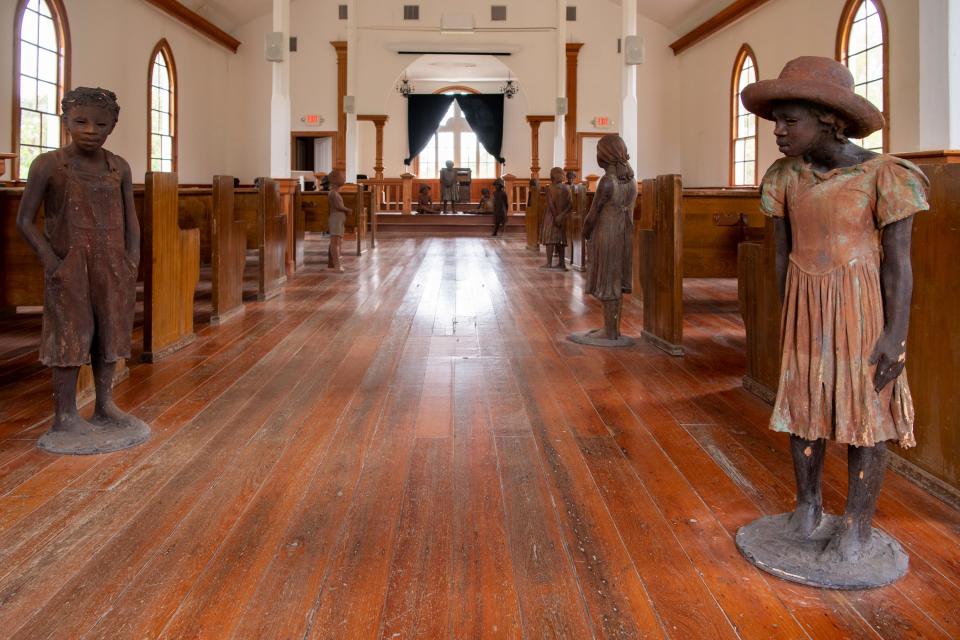
By then, DuPont was newly operating its plant just a few blocks away. As he finished construction on his home, Taylor noticed white families leaving and Black residents moving in. One Black neighbor told him he also had struggled to secure a home loan but was quickly approved for a house in Reserve.
“They were dumping the property because they knew DuPont was coming,” said Taylor, 79, who founded Concerned Citizens of St. John in 2016. “We didn’t know.”
These days, Reserve is a working-class township with a per capita annual income of $20,600. One-fourth of its population lives in poverty – more than double the national poverty rate.
A study in the 1990s by the Deep South Center for Environmental Justice found that 80% of Black people living along the Mississippi River between New Orleans and Baton Rouge lived within 3 miles of a polluting facility.
Beverly Wright, executive director of the center, said that started a downward cycle that weighed on the wealth and health of Black people who remained.
“As people began to realize that these chemicals are dangerous, they were making people sick, their property values started going down,” she said. “And they’re being exposed to hundreds of chemicals that lead to heart disease, acute respiratory ailments, kids with whooping cough.”
A community consumed by cancer and now COVID-19
Allen Belvin raced around his parents' house in Reserve, cleaning up after his barely moving parents and coaxing them to eat a few bites of food. Nearly simultaneously, his father, Lee Belvin Jr., and mother, Mary Belvin, had come down with debilitating symptoms: lack of appetite, high fever, trouble breathing, uncontrollable diarrhea.
On March 24, he sent his mother to the hospital. Three days later, an ambulance took his father, as well. Both tested positive for the novel coronavirus.
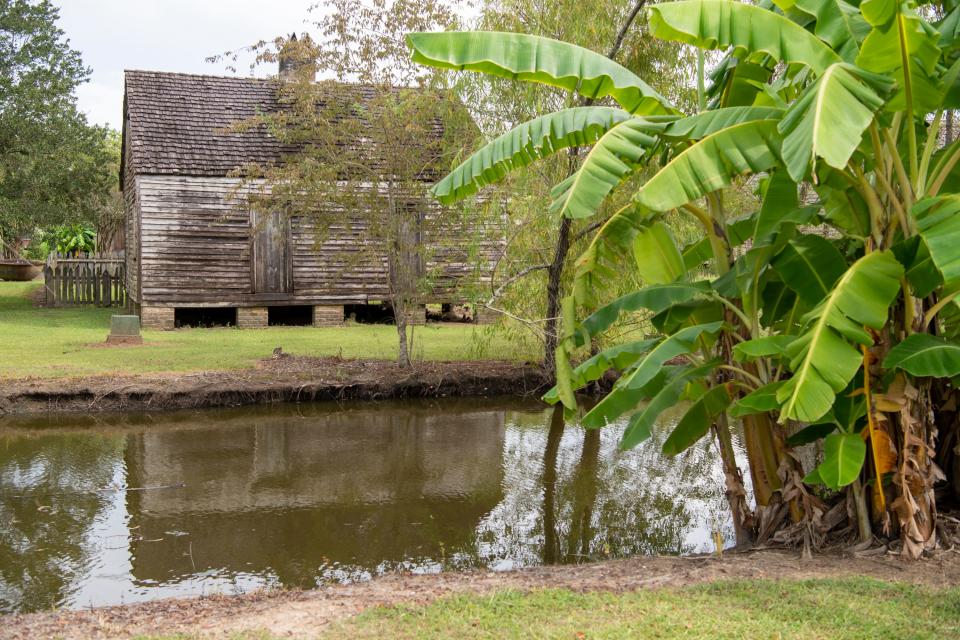
Just a few weeks earlier, the pair had been going about their lives. Lee Belvin, 76, had retired after working for years at various petrochemical plants. He mowed lawns for neighbors and delivered meals to seniors. Mary Belvin, 74, kept active at her local Baptist church. Each had hypertension and diabetes, Allen Belvin said.
The couple had moved to Reserve in the 1960s for its high ground and easy access to the river. It seemed a quiet, idyllic place to raise a family. When hurricanes battered the area, they would help organize food drives from church parking lots. “They were both giants when it came to the community,” Allen Belvin said.
The virus struck fast and mercilessly. By the end of March, both were in separate ICU units at Ochsner Medical Center in Kenner. Lee Belvin died April 1 while on a ventilator. A few days later, a nurse used an iPad to launch a Zoom call between Mary Belvin and her son and a few other family members. Mary was unresponsive, sleeping gently on her hospital bed. The family members said their goodbyes, told her they loved her.
On April 4, three days after her husband had died, Mary Belvin was gone, too.
“I’m still in a numb frame of mind,” Allen Belvin said. “I don’t even fully understand it yet.”
Allen Belvin said he doesn’t know whether emissions from the nearby Denka plant or his father’s years of work at chemical companies may have contributed to his quick death. But he said he knows more than 100 people in and around Reserve – most of them Black – who have been diagnosed with or have died from cancer and other ailments.
A decade ago, locals didn’t think much about potential health risks from living so close to the plants, he said. But then friends and neighbors began dying at alarming rates.
“People finally started thinking, ‘Yes, this stuff is killing people and we need to start paying more attention to it,’” he said. “People were just dying, and they had no answers to it.”
It took health and environmental regulators decades to learn about chloroprene
The federal government has, for decades, documented cases showing how communities of color and low-income communities are more vulnerable to health and environmental threats compared with society at large. “Housing segregation, the influence of race in local zoning practices, and infrastructure development all contribute to this disparity,” according to a 2003 report by the U.S. Commission on Civil Rights.
The first time Congress forced the EPA to closely monitor chemicals like chloroprene was 1990. It wasn’t until 2000 that the Department of Health and Human Services released a report describing chloroprene as “reasonably anticipated” to be a human carcinogen. It took yet another decade for the EPA, tasked with regulating plants such as Denka, to declare chloroprene "likely" to be a human carcinogen in 2010.
In 2015, the EPA published the National Air Toxics Assessment, or NATA, a detailed accounting of air pollutants, and ranked all 72,000 census tracts in the U.S. by the overall cancer risk to people in those communities.

Census Tract 708 in St. John the Baptist – a trapezoid-shaped neighborhood in east Reserve closest to the Denka plant – ranked No. 1 in the nation for overall cancer risk. Five of the top 10 census tracts in the country – and nine of the top 20 – were in St. John the Baptist Parish, according to the report. Census Tract 708 is 92% Black.
The EPA set 0.2 micrograms per cubic meter of air over the course of a lifetime as a safe level of chloroprene and installed air monitors in six locations near the plant to monitor Denka’s output of the toxin. Since the monitors were installed in 2016, they have shown chloroprene levels far above that level, with one monitor just west of the plant showing an average daily concentration of 5.2 micrograms per cubic meter – 26 times above the EPA’s recommended level.
“It was extremely significant,” Wilma Subra, a longtime environmentalist and lead technical adviser for LEAN, said of the NATA report. “It showed what they had been exposed to all these decades. Now, we had a measure of that exposure.”
In 2017, Subra took an informal survey of 150 parish residents and found that 64% of those living in Census Tract 708 reported having various forms of cancer, including kidney, lung, liver, prostrate and ovarian.
That year, Denka agreed to lower its chloroprene emissions by 85%. The company spent more than $35 million to install new equipment, and in May, the Louisiana Department of Environmental Quality confirmed that Denka had achieved that 85% reduction.
Still, the air around the plant remains well above the 0.2 micrograms per cubic meter threshold recommended by the EPA. And Denka has been pushing the EPA to downgrade its assessment of chloroprene as a "likely" carcinogen and to raise the allowable limit of emissions.
The EPA turned down Denka’s request in 2018, concluding that the chemical remains a "likely" carcinogen, a finding that is "unanimously supported" by external peer reviewers. Denka is appealing that decision.
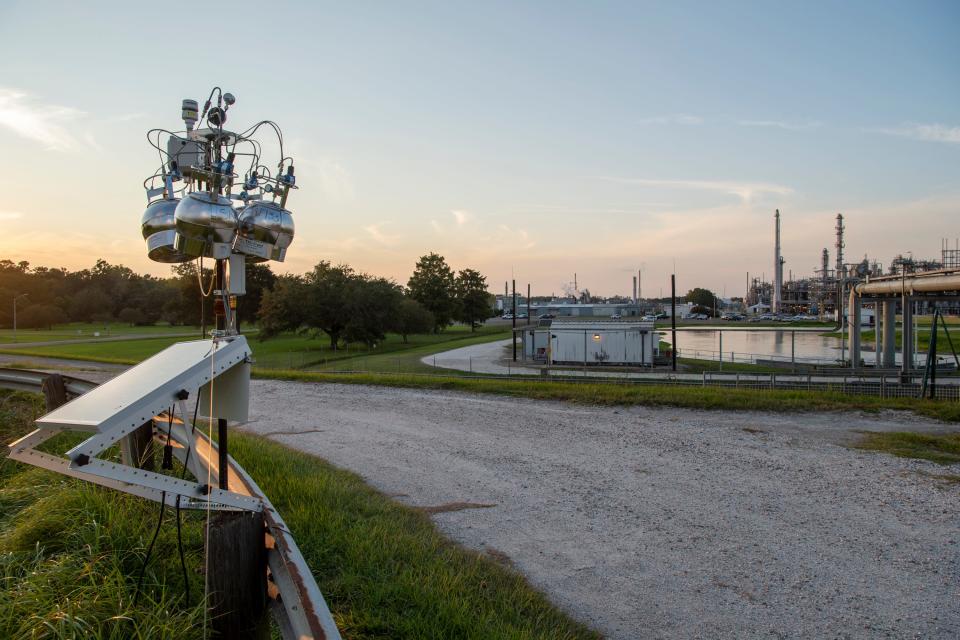
Harris, the Denka spokesman, said the company agreed to reduce emissions “to assist its community and ensure peace of mind for its neighbors” but is now requesting higher emissions rates because it claims a recent study shows chloroprene is safer than previously thought. The study was conducted by consultants hired by Denka.
The EPA has been deliberating over Denka’s latest request to reclassify the chemical for more than two years with no decision in sight. In a statement, the agency said the level of 0.2 micrograms per cubic meter of chloroprene is simply a recommendation, not an enforceable rule or red line. The amount of chemical emitted from a plant is enforceable and, in that respect, Denka has remained below the 350,000 pounds per year allowed by state and federal regulators.
Former officials: EPA's inaction not uncommon
The EPA said it has worked closely with the state to produce the 2017 agreement with Denka to lower its chloroprene emissions, conducted a Clean Air Act inspection of the plant in 2016 and continues to monitor chloroprene concentrations in the air around the plant.
When asked if the agency is considering forcing Denka to drop its emissions any lower, the agency said it continues working with state regulators but "cannot comment further on any potential enforcement action."
Christopher De Rosa spent three decades at the EPA and a division of the Centers for Disease Control and Prevention that focuses on toxic substances. He described the reluctance by federal regulators to take a stronger stance against chloroprene emissions, and other chemical pollutants, as “analysis paralysis.”
“I’ve been told by people, ‘You still don’t have a smoking gun,’” he said. “And I would say, ‘Maybe, but I can see the bullet casings all over the floor.’”
The EPA under President Donald Trump has retreated into further inaction, former federal regulators and observers said. Beginning with the appointment of Scott Pruitt and followed by current EPA administrator Andrew Wheeler, both industry-friendly appointees, the agency has rolled back regulations and allowed petrochemicals to operate unabated, even through a pandemic, said Philip Landrigan, who established the environmental epidemiology unit at the Centers for Disease Control and Prevention.

Mustafa Santiago Ali watched in dismay as the Trump administration attempted to dismantle the EPA’s environmental justice program, proposing to slash its annual budget from $7.3 million to zero. He worked at the EPA for 24 years, most recently as a senior advisor for environmental justice and community revitalization. His department monitored the environmental effects of government projects in minority and rural communities. It hasn’t met once under Trump, he said.
The number of EPA inspections has also fallen each year of the Trump administration, leaving the most vulnerable Americans exposed as COVID-19 spreads in their communities, said Ali, who left the agency shortly after Trump took office.
“There has to be culpability for the decision-making going on and the fact that more people are losing their lives,” he said.
The EPA said it has provided environmental justice grants and increased "enforcement efforts" in urban and overburdened communities, but did not provide any data to back up that claim.
“The nation’s air, water and land are cleaner and safer now than they were when President Trump took office,” EPA spokesman James Hewitt said.
Dream of homeownership ends in death and illness for Black family
Mary Hampton, 81, grew up in Reserve as segregation and Jim Crow laws gripped the region. She remembers having to sit in the back of the bus and drinking out of “Colored” water fountains. If Hampton and her friends wanted to catch a matinee at Maurin’s Theater, they watched from the balcony; first-floor seats were for whites only.
In the 1960s, as the DuPont plant came online and white families began moving out, Hampton’s father, Joseph James Sr., took advantage of the low prices and bought several acres of land. James, who worked at a nearby sugar refinery, divided the land and gave each of his nine children a parcel on which to build a home, realizing a longtime family dream.
The siblings grew up as neighbors and raised families on their parcels. Then, one by one, they fell sick. Hampton’s brother died of cancer, followed by her son’s wife, her daughter’s husband and two sisters-in-law. Hampton herself has struggled with chronic kidney disease, and her son has severe asthma.
“We thought we had a legacy,” Hampton said of the land her father bestowed to his children. “In fact, it was a death sentence.”
In 2016, Hampton joined Taylor in creating Concerned Citizens of St. John. Today, she sees many of her neighbors who have had cancer, lung disease or some other ailment succumbing to COVID-19. Her sister-in-law and her husband have died from the virus, as have two neighbors, and a girlfriend spent 60 days on a ventilator, she said.
Beginning in March, Hampton has spent most of her days in her home, scared to venture out.
“You’re always afraid,” she said. “You don’t know who’s going to be next.”
Plant forced out of white community, allowed to stay in Black community
In the year 2000, people in a suburb of Louisville, Kentucky, known as Rubbertown were getting sick, and activists suspected emissions from nearby chemical plants, including one owned by DuPont that was emitting chloroprene.
Subra, the Louisiana-based environmentalist who was trained in microbiology and chemistry, was called in to dig into the statistical data and confront the plant's scientists. Citizen groups teamed up and pressured city and county officials to advocate for lower emissions. Within five years, DuPont stopping making neoprene there, shifting all of its neoprene production to Reserve. Rubbertown is 56% white, 39% Black.
Adults weren't the only ones feeling the effects. In 2015, children at East St. John Elementary School in Reserve were complaining to the school nurse about stomach aches, headaches, sore throats, chest tightness, vomiting, burning eyes, dizziness and nausea. Activists there also suspected emissions from nearby chemical plants, including the chloroprene-emitting DuPont plant.
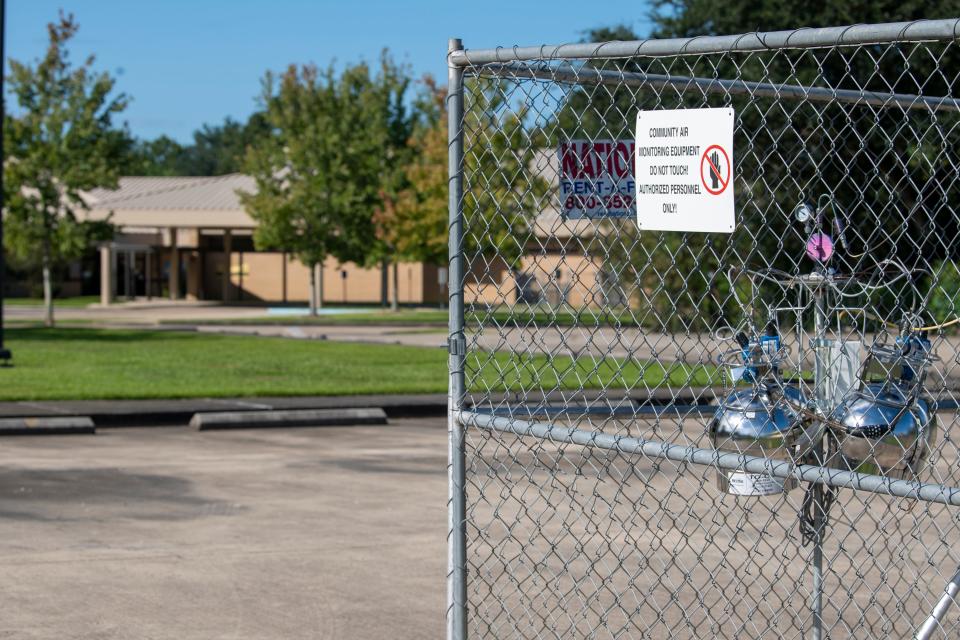
The Louisiana Department of Health investigated, recommended the school be relocated and, in the meantime, suggested that the school develop ways to "minimize the entry of particulates into the school and to manage indoor air quality."
An EPA air monitor set up at another elementary school near the Denka plant has registered average chloroprene levels of 4.3 micrograms per cubic meter since 2016 – 21 times above the EPA recommended level.
Citizen groups formed, lawsuits were filed and residents put as much public pressure as they could on the Denka plant. In their case, nothing changed. The plant remains open.
“Usually, the white community has much more social resources that they get listened to much more quickly,” Subra said.
COVID-19 death count grows for Black community
On a recent Sunday at Our Lady of Grace Catholic Church on Highway 44, about a quarter-mile from the Denka plant entrance, around 50 mask-wearing parishioners filed into the church, pumping hand sanitizer onto their hands from large containers next to the holy water.
The Rev. Christopher Chike Amadi led them through readings of the Gospel and Liturgy of the Eucharist before asking those gathered to pray for three more recent victims of COVID-19.
“We’ve been through a lot,” Amadi told them. “But nothing can destroy the church.”
Amadi has helped lead more than 20 funerals since the pandemic began, a high number that has taken a personal toll. Most of the funerals were direct burials with fewer than 10 family members present.
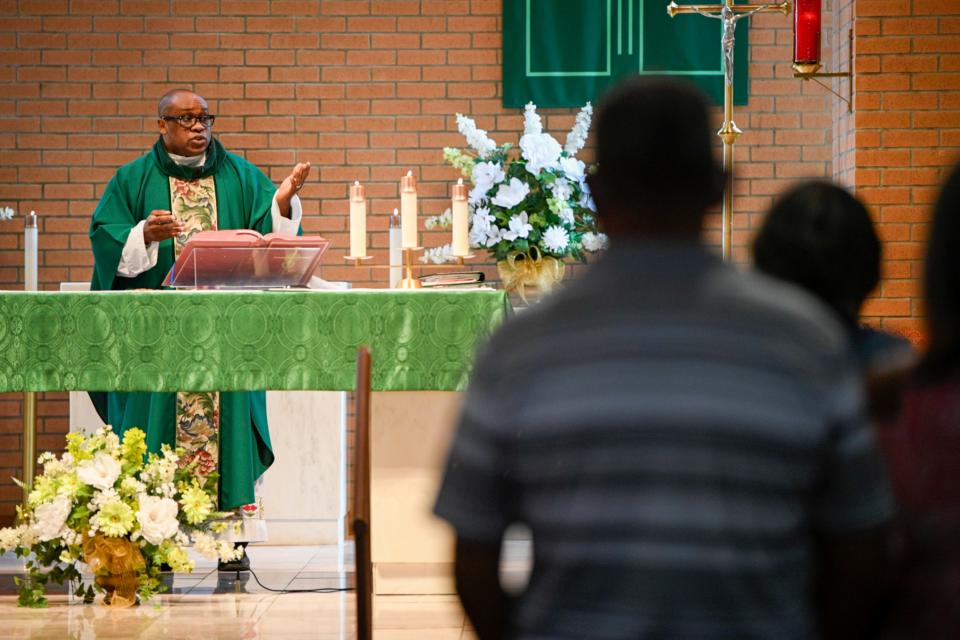
He prays he doesn’t break down himself.
“You’re giving, consoling, consoling, consoling, holding back, telling somebody it’s going to be OK,” Amadi said. “At some point, you ask yourself, ‘How much of that do I still have left?’”
Harrison Rogers, 74, lived alone in east Reserve, less than a mile from the Denka plant. Divorced, Rogers was a longtime New Orleans Saints fan who enjoyed traveling alone and was awaiting his first great-grandchild in August. He had worked at the oil refinery in nearby Norco for 26 years before retiring in 2005 and was on the waiting list for a kidney transplant. He was constantly on dialysis.
When he didn’t answer his phone on March 11, a neighbor went to check on him and found Rogers crumpled on the kitchen floor, too weak to move and struggling to breathe. He died in the ambulance as it rushed him to the hospital. He later tested positive for the novel coronavirus, said Harrison Rogers Jr., his son.
“His immune system just couldn’t handle it,” said Harrison Rogers Jr., who was also infected with the virus but survived. “A lot of older people are dying in Reserve.”
And not just older people.
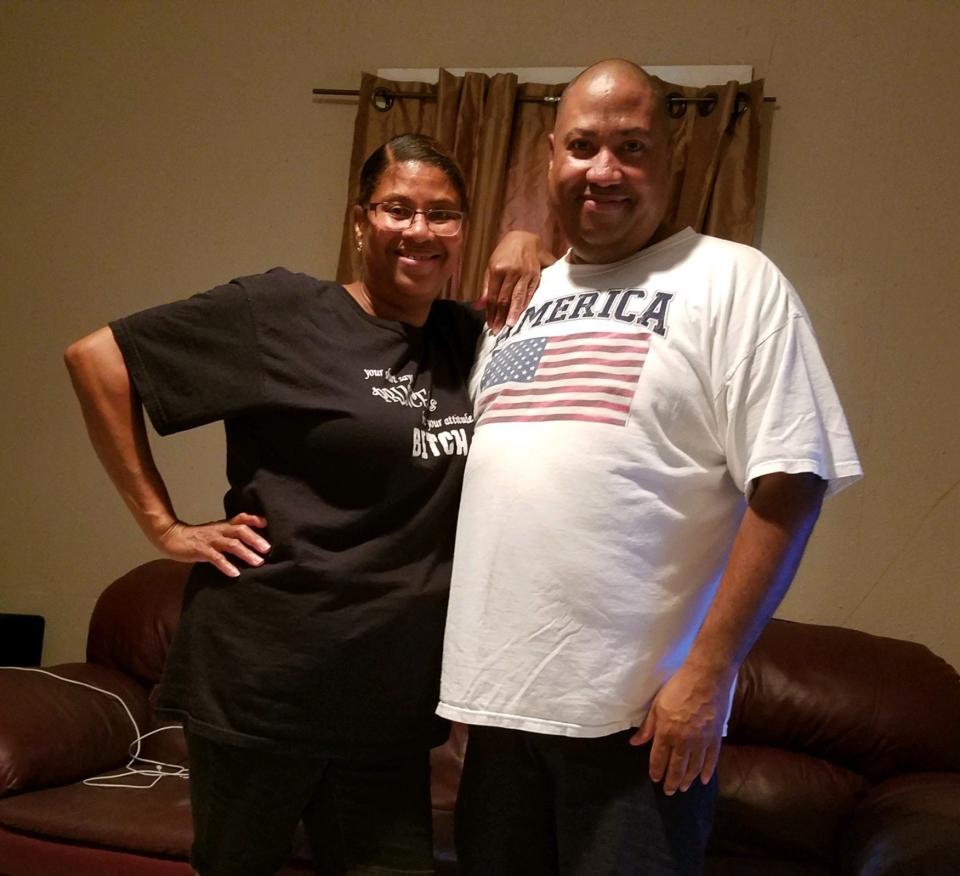
On Saturday, March 28, Wilson cooked a big dinner and texted her younger brother, Jules Duhe, urging him to come help her eat it and hinting that there’ll be leftovers to take home. “Come get this pot of shrimp fettuccine,” she texted. “Bring ur pot.”
It was a common ritual for the pair: She would cook a large pot of red beans and rice or gumbo and Duhe, who lived a few minutes away in Reserve, would show up to eat it.
The siblings were constantly together, whether listening to live bands at the French Quarter Festival or meeting at relatives’ homes to watch the Saints. Just a week earlier, he had been in her kitchen, drinking Pink Moscato wine and complaining about the crush of customers at the Dollar General where he worked part-time. “Don’t they know there’s a pandemic?” he complained.
Duhe always rushed over when she made dinner, so, when her text went unanswered, she began to worry. Was he working late and had turned off his phone? she wondered. Was it something worse?
Unbeknownst to Wilson, Duhe had gone to an urgent care clinic that day complaining of shortness of breath and was rushed to the hospital, where he tested positive for the coronavirus. The next day, he texted his sister: “I got it too.”
Over the next few days, Wilson exchanged a series of texts with her brother, as his situation seemed to improve, then plummeted.
On March 29, he texted her: “I can now text. Cant talk with full (oxygen) face mask on. I have mild case covid-19, medication improving. I coughed so much I couldn’t breathe.”
The next day at 6:40 p.m.: “They treating me very well. I’m in quarantine. Doing way better today than Friday.”
Wilson asked about his breathing. “Weak,” he answered.
Two hours later, Duhe texted her directions to where he had left his Jeep Cherokee and reminded Wilson to feed his calico cat, Cali. She asked what kind of cat food she liked. “Any cheap bag of cat food,” he replied.
That was the last time Wilson heard from her brother. Two days later, as the virus strangled his lungs, he was put on a ventilator, where he would spend the next 36 days. He was given a tracheostomy and revived from a heart attack when they moved him to a different floor.
The early morning phone call on May 11 confirmed the worst. Duhe was gone.
Wilson was still mourning her brother’s death when she received news that her older sister, Shirley Jacob, 78, who suffered from congestive heart failure, had contracted the virus and was in the hospital. She died Aug. 18. At Jacob’s funeral, Wilson barely cried.
“I was just numb,” she said.
Reserve grinds to a halt as COVID-19 sweeps through
The Denka plant has continued to operate unabated during the pandemic – even as churches, schools, businesses and other sectors have been forced to close. Denka officials say they have encouraged social distancing, instituted temperature checks for people entering the plant, added hand sanitizing stations and conducted frequent cleanings of the facility.
Parish President Jaclyn Hotard said she was surprised by the number of cases and deaths that ravaged her parish. She attributed the high death rate, in part, to the deaths from the nursing home, but acknowledged that the area’s high rate of people with preexisting conditions also played a role.
When the rates of infection and deaths ebb and the emergency phase subsides, Hotard said she and her staff plan to study the numbers and determine what role, if any, the Denka and other petrochemical plants may have played in the parish’s battle with COVID-19.

“It’s a valid concern,” she said. “There will absolutely be a deep dive into the data to find the answers to all those questions.”
Meanwhile, the residents of Reserve are relying mostly on Concerned Citizens of St. John to sound the alarm, push state and federal regulators to better monitor the Denka plant and keep them informed. Last year, Taylor, the group’s founder, traveled to Japan with other Reserve residents to meet with Denka representatives and voice concerns over the plant’s emissions. Several lawsuits have also been filed to try to get the plant’s operators to lower emissions.
Since the start of the pandemic, Taylor has witnessed his childhood friend die from COVID-19, a husband and wife die on the same day and several friends get sick with the virus. He said it shouldn’t fall on residents – some of the poorest families in the state – to gather evidence and prove that the plant is sickening people and contributing to the COVID spread.
As he talked, Taylor looked out his front door down East 26th Street to the trail of victims left behind by cancer: two brothers who died from cancer, a husband and wife who lived across the street, another good neighbor.
“They’re killing us,” he said. “Then they tell us to prove they’re doing it. That’s the height of arrogance and complete disregard for our humanity.”
Less than a mile east, white smoke from the Denka plant soared steadily into the sky.
Contributing: Mark Nichols
Follow Jervis and Gomez on Twitter: @MrRJervis, @AlanGomez.
Correction: A previous version of this story incorrectly stated the measurement of chloroprene. The correct measurement is micrograms per cubic meter.
MORE IN THIS SERIES
Racism turned their neighborhood into 'Cancer Alley.’ Now they’re dying from COVID-19.
In New Jersey’s most segregated county, racism and coronavirus made a ‘vicious circle’
This article originally appeared on USA TODAY: COVID, racism kills Black Americans living near toxic plants

